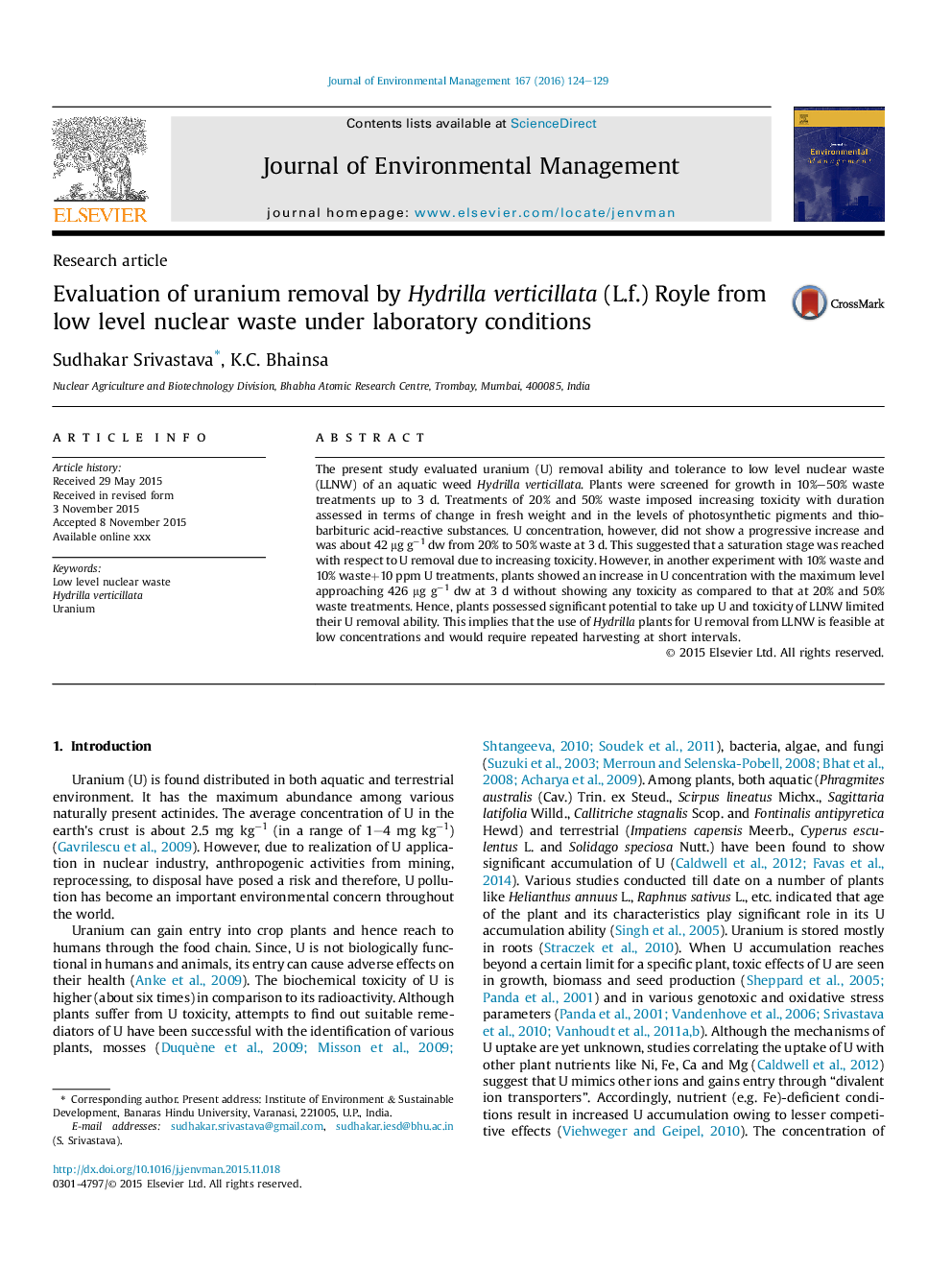| Article ID | Journal | Published Year | Pages | File Type |
|---|---|---|---|---|
| 7481225 | Journal of Environmental Management | 2016 | 6 Pages |
Abstract
The present study evaluated uranium (U) removal ability and tolerance to low level nuclear waste (LLNW) of an aquatic weed Hydrilla verticillata. Plants were screened for growth in 10%-50% waste treatments up to 3 d. Treatments of 20% and 50% waste imposed increasing toxicity with duration assessed in terms of change in fresh weight and in the levels of photosynthetic pigments and thiobarbituric acid-reactive substances. U concentration, however, did not show a progressive increase and was about 42 μg gâ1 dw from 20% to 50% waste at 3 d. This suggested that a saturation stage was reached with respect to U removal due to increasing toxicity. However, in another experiment with 10% waste and 10% waste+10 ppm U treatments, plants showed an increase in U concentration with the maximum level approaching 426 μg gâ1 dw at 3 d without showing any toxicity as compared to that at 20% and 50% waste treatments. Hence, plants possessed significant potential to take up U and toxicity of LLNW limited their U removal ability. This implies that the use of Hydrilla plants for U removal from LLNW is feasible at low concentrations and would require repeated harvesting at short intervals.
Keywords
Related Topics
Physical Sciences and Engineering
Energy
Renewable Energy, Sustainability and the Environment
Authors
Sudhakar Srivastava, K.C. Bhainsa,
